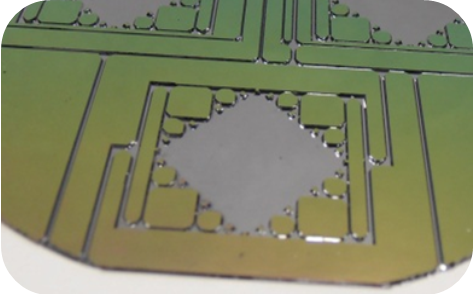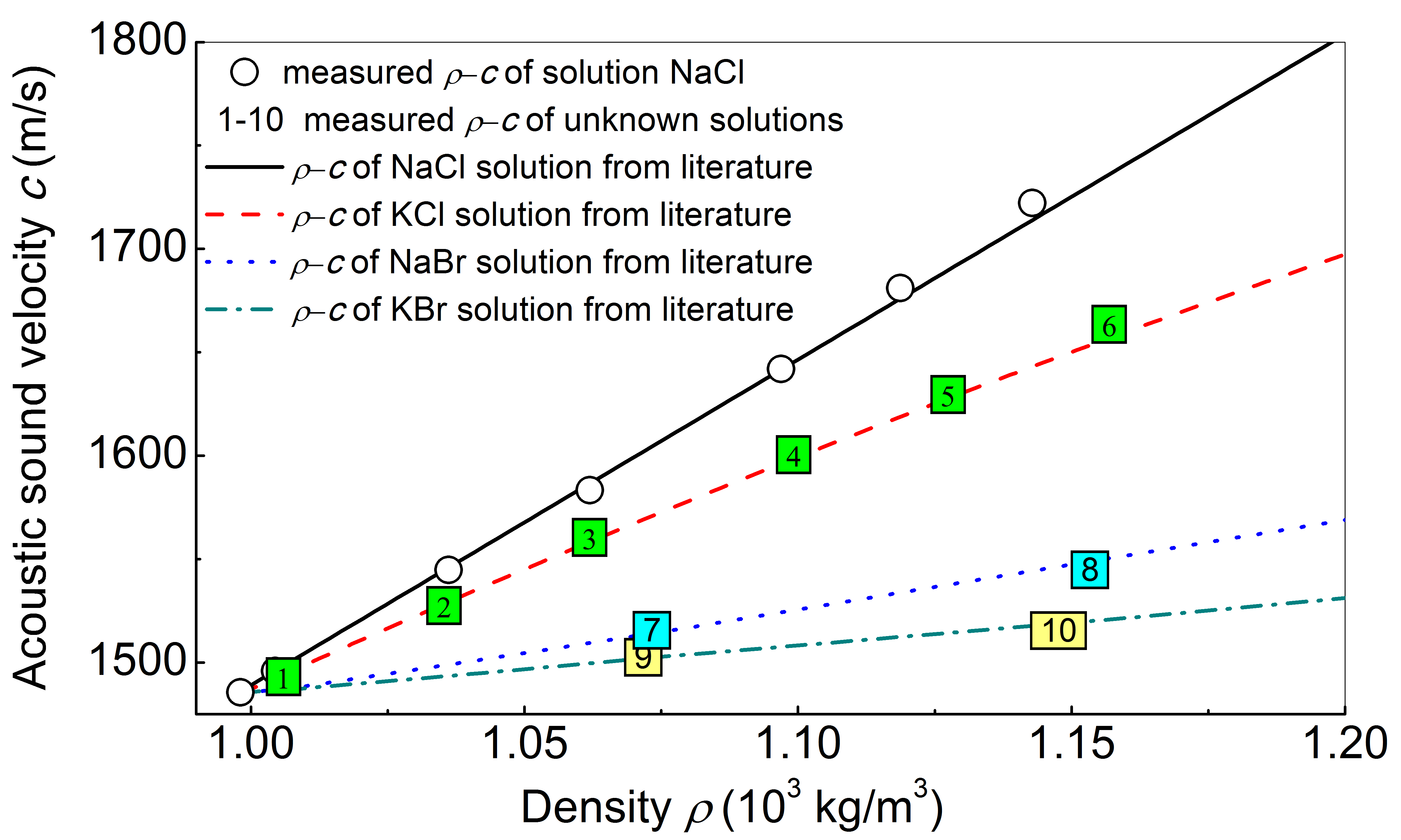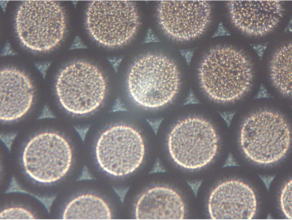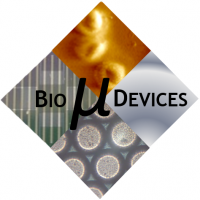Acoustofluidic interactions for sensing applications
Resonant piezoelectric microsensors are very suitable for label free sensing in liquid. The devices rely on the interaction between acoustic waves propagating within a thin membrane and the liquid. This work lies with two types of modes of vibration: Lamb waves and bulk acoustic waves excited by a lateral electric field [1]. The designs of the structures have been performed using analytical models and FEM simulation. In parallel, several microfabrication processes have been developed [2] keeping in mind the fact that the devices must remain low cost. We report the use of two piezoelectric structures, Si/AlN and GaAs to generate and propagate waves. The fabrication process based on anisotropic chemical etching allows producing a thin membrane but is also adapted for microfluidic microchannels (Fig.1). An experimental set up has been realized which integrates the resonant microsensors, the microfluidic chamber, the electrical connection and microfluidic ports. The microfluidic chamber is made in silicon or GaAs using also wet chemical etching. Real-time analyses of sensors response were recorded. Various experiments show a multi-parameters detection of a liquid, such as its density (Fig.2), sound velocity and viscosity [3]. These devices already showed good ability to perform measurements on gas. In parallel with this transducer design and tests, we developed a specific interface that is able to fix covalently a dense layer of bio-receptors on the GaAs surface. These results are promising to obtain information on the biological interactions that we want to detect and measure with a low detection level [2]. The implementation of this active surface on the transducers will allow us to make rapidly some tests with biological liquids and determine the experimental performances of the devices in terms of selectivity, sensitivity. The microfluidic chamber can also generate fluids made of arrangement of monodisperse droplets/bubbles for fluid/gas characterization.
 |  |  |
| Figure 1: Microfluidic cell | Figure 2: density measurement of a fluid | Figure 3 : 2D micro-acousto-fluidic platform |
Contacts: Th Leblois, J.F. Manceau, C Elie-Caille, F Chollet, W. Boireau
References:
[1] Bienaime, A., Liu, L., Elie-Caille, C., Leblois, T., “Design and microfabrication of a lateral excited gallium arsenide biosensor”, Eur. Phys. J. Appl. Phys 57, 21003 (2011).
[2] A. Bienaime, C. Elie-Caille, T. Leblois, “Microstructuration of GaAs surface by wet etching: towards a specific surface behaviour GaAs as a crystal for bioMEMS: Micromachining of the sensing surface”, J. Nanoscience and Nanotech 12, 6855-6863, (2012).
[3] Zhou, L., Wu, Y., Xuan, M., Manceau, J.-F., Bastien, F., “A Multi-Parameter Decoupling Method with a Lamb Wave Sensor for Improving the Selectivity of Label-Free Liquid Detection”, Sensors 12, 10369–10380, (2012).

